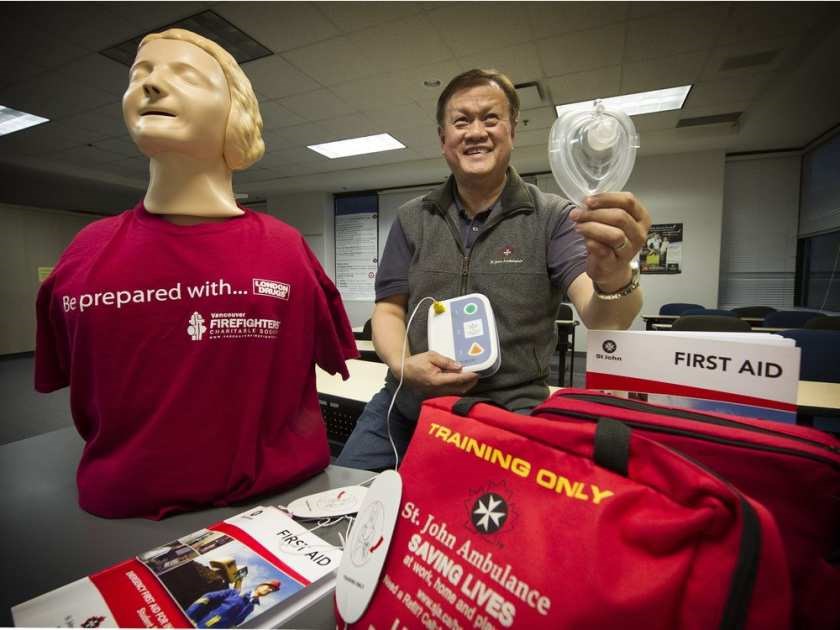People who suffer a cardiac arrest in public are more likely to receive CPR from bystanders in the city’s ethnic Chinese neighbourhoods, according to new research from the University of British Columbia.
The chances of surviving a heart stoppage without neurological damage are highest when it happens within 2.7 kilometres of a hospital, but researchers found higher survival rates in parts of the west side, east and southeast Vancouver that are not close to hospitals.
Bystanders appear more willing to perform cardiopulmonary resuscitation — potentially lifesaving chest compressions — in predominantly Chinese neighbourhoods, said lead researcher David Barbic, an emergency room physician at St. Paul’s Hospital.
Elevated rates of survival without brain damage were also found in Kitsilano, Strathcona and across a broad swath of central Richmond. The researchers analyzed data from 1,600 cardiac arrests in Vancouver, Richmond and the North Shore between 2007 and 2011.
“Areas with the highest rates of bystander CPR roughly correlate to the neighbourhoods that tend to be ethnically Chinese,” he said. “It may be that the Chinese community in Vancouver is more receptive to performing CPR in a public place ... it’s hard to tell.”
Interest in first aid training in the Asian community has been strong for the past 20 years, especially since St. John Ambulance started giving Chinese-language courses, according to instructor Peter Ko.
Today, courses are taught in Cantonese or Mandarin two to three times each month in Vancouver and Richmond.
“Some people come for work reasons, but a lot of them want to know what to do in an emergency and they’ve either seen an accident or they have an older neighbour and want to be able to help,” he said. “A lot of elderly people want to learn CPR and how to use (a defibrillator).”
Chinese community organizations — churches in particular — have taken an interest in getting CPR training, sometimes sending senior members to St. John Ambulance classes or having instructors teach on-site, Ko said.
“It takes time for an ambulance to show up. Even in urban areas it’s eight minutes,” he said. “If a person’s heart isn’t beating, you need to do CPR to save their life, and when people know the steps, they are more willing to try.”
Bystanders are often more willing to give aid if they are aware of B.C.’s 1996 Good Samaritan Act, which protects rescuers from liability if they injure someone in the process of giving first aid, Ko said.
Immediate CPR by itself increases a patient’s survival rate by two to three times, according to co-author Jim Christenson, head of UBC’s department of emergency medicine.
“This study is one piece in our understanding cardiac arrest, and we’ve more than doubled the (overall) survival rate from 10 years ago to about 15 per cent, up from 6.6,” he said.
That coincides with a dramatic increase in the likelihood that a cardiac arrest victim will receive CPR, now over 40 per cent.
Health authorities have taken steps to simplify the procedure, exploit the ubiquity of cellphones and reduce the yuck factor in CPR. Non-professional rescuers are no longer encouraged to combine mouth-to-mouth respiration and CPR when the victim has no heartbeat.
“Removing the requirement for artificial respiration made people a lot more confident to attempt chest compressions,” he said. “With emergency dispatchers able to give instructions over the phone, people will try CPR even if they haven’t been trained.”
Unlike a heart attack — a blockage of a blood vessel in the heart — in cardiac arrest, the heart stops beating altogether, which dramatically shortens the window for avoiding permanent damage to the heart and the brain.
“We can see from this and other studies that early bystander CPR is associated with higher rates of survival and neurologically intact survival,” Barbic said.
The study appears in the Canadian Journal of Emergency Medicine.
For more stories, go to VancouverSun.com



